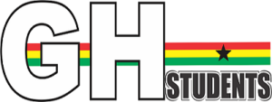In this article, we bring you the list of the top 10 African countries with the worst education systems. Earlier on we wrote on the list of top 10 African countries with the best education systems, you should check it out.
Based on the United Nations’ Educational, Scientific and Cultural Organization’s (UNESCO) Educational Development Index (EDI), we’ll be bringing to you the top 10 countries with the worst education system in Africa.
First-world and OECD countries are lauded for the strength of their education systems, the level at which their populations are developing, and much is made of who may have moved up or down within the top 10. Unsurprisingly, these top countries consist mostly of Scandinavian and Nordic countries – Norway is currently ranked number 1 under the Human Development Index (HDI) while the bottom half of the United Nations Development Programme’s (UNDP) report is heavily populated by countries from the developing world.
One factor studied in the HDI is the Education Index. The UNDP ranks countries through a series of parameters that lets us know just how good – or bad – a country’s education system really is.
READ ALSO: Top 10 African Countries with the Best Education Systems.
Top 10 African Countries with the Worst Education Systems
Below is the list of the top 10 African countries with the worst education systems. Find out where your country ranks.
10. Angola
Occupying the 10th position on the list is Angola with an Education Development Index of 0.685. With the highest Adult Literacy Rate (ALR) on this list of 70.1%, Angola still clearly stands head and shoulders above its continental compatriots on this list.
In fact, Angola has increased efforts to improve the national education system in accordance with UNESCO’s ‘Education for All’ program and hopes to achieve its goals. Currently, the United Kingdom’s Chatham House has proposed joint efforts to help the coastal African nation achieve and surpass the initiative’s proposed target. Unfortunately, ranking 111th in the UNESCO EDI still means that the education system in Angola is in dire straits.
9. Gambia
Next up is Gambia with an EDI score of 0.677, and Adult Literacy Rate of 50 % (the eleventh lowest in the world). In Gambia, there is only a 4.1% Tertiary Enrollment Ratio for the national education system which consists of a whopping 574 schools.
8. Zambia
At the 8th position is Zambia. In Zambia, there are nine public universities and several technical schools that provide higher education. The Ministry of Science and Technology and Vocational Training (MSTVT) in Zambia was also developed in 1992 to foster growth in technological fields.
Educational opportunities beyond secondary school are limited in Zambia. After secondary school, most students study at the various colleges, around the country. Normally they all select students on the basis of ability; competition for places is intense.
7. Guinea
Guinea’s 114 ranking in UNESCO’s Education analysis gives a pretty clear picture of education in the West African country. It’s Adult Literacy Rate of 41% is the tenth lowest in the world, and there is an abysmally low ‘Satisfaction with Education Quality’ ranking of 3 in their HDI ranking.
6. Eritrea
Coming in 6th is Eritrea – ranked 115st in the world – boasting one of the highest adult literacy rates on this list with a 67.8% ALR. The country’s Tertiary Enrollment ratio was a dismal 2% and the country has a Gross Primary Enrollment ratio of 45% – the lowest on this list.
5. Ethiopia
Ethiopia brings us to number 5 with a 0.622 EDI – barely nudging out Eritrea by 0.001 – and an ALR of 39%; the 5th lowest in the world. With some of the lowest educational statistics in the world, the system in Ethiopia looks bleak for the country’s schoolchildren.
With a Gross Enrollment Ratio of 5.5%, the situation would seem almost hopeless but a recent World Bank publication states that the WB’s Board of Executive Directors has “approved major financing for Ethiopia to transform the quality of its teaching and learning for more than 21 million children in primary and secondary schools”. The project will receive US $550 million of investment towards their goal of increasing educational quality in the country. Hopefully the project is successful and Ethiopia can find its way out of the bottom rungs of international education rankings.
4. Central African Republic
4th last in UNESCO’s Education ranking is the Central African Republic with a 0.617 EDI. Their 56.6% adult literacy rate only makes them 19th last in the world, but their education levels may be taking a back seat to the mass exodus taking place within the country that some are calling an “ethnic cleansing”.
3. Mali
Mali comes in at number 3 with 0.612 EDI with a 31.1% adult literacy rate making it the second-lowest on this list. 2012 saw massive amounts of internal violence within the country when the nomadic Tuareg tribe took control in the northern part of the country while making a push for independence from the central Malian state.
The violence has since slowed but is far from ending anytime soon. Recently, incidents in the country have included a mine being overrun by gunmen, landmine victims, and the members of the Malian military being found in shallow graves outside the capital.
2. Burkina Faso
Second on the list of countries with the worst education systems is Burkina Faso with 0.894 EDI. The country is tied for the lowest adult literacy rate with an ALR of 27.7%. The poor education levels don’t stop there for Burkina Faso with only 2% of the Adult Population having a secondary education.
It gets even worse when their stats are scrutinized a little further – their gross enrollment ratio is a concerning 3.3%.
1. Niger
Niger is the country with the worst education system in Africa with 0.528 EDI. Tied for the lowest adult literacy rate on this list at 28.7%, the educational situation in Niger is bleak.
The population in the country with secondary education is 5.1%. The gross enrollment ratio is 1.5%. There is no civil war, a minimal influx of refugees from neighbouring countries and a relatively stable political system in comparison to many African countries. Yet unfortunately, Niger is consistently at the bottom of UN indexes for almost every category of analysis – Adult Literacy Rate, Education Development Index, and Human Development Index.






